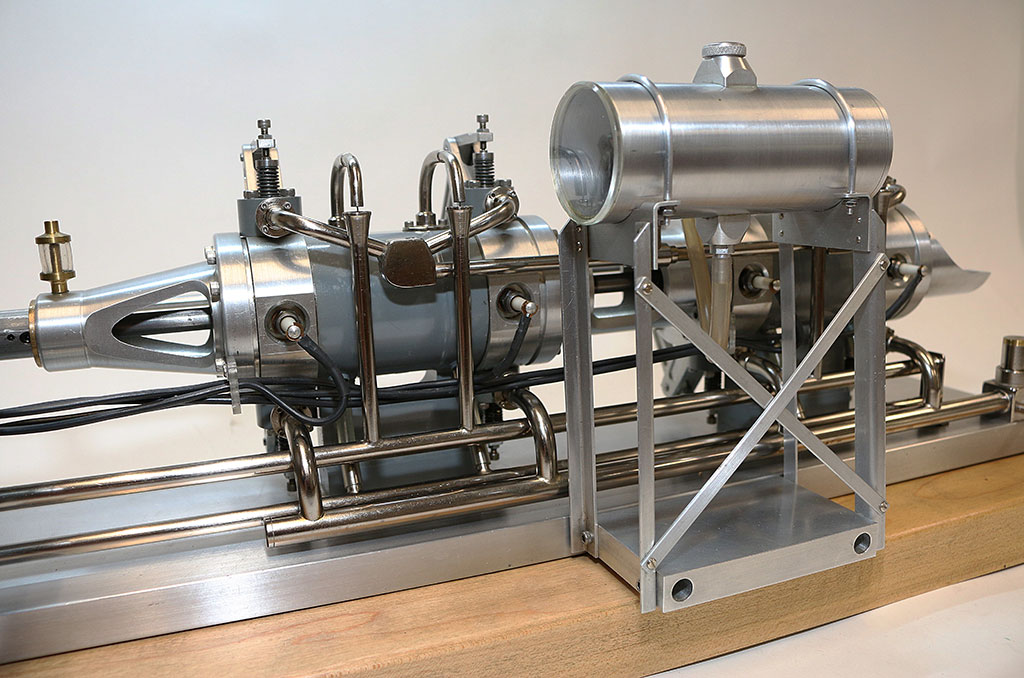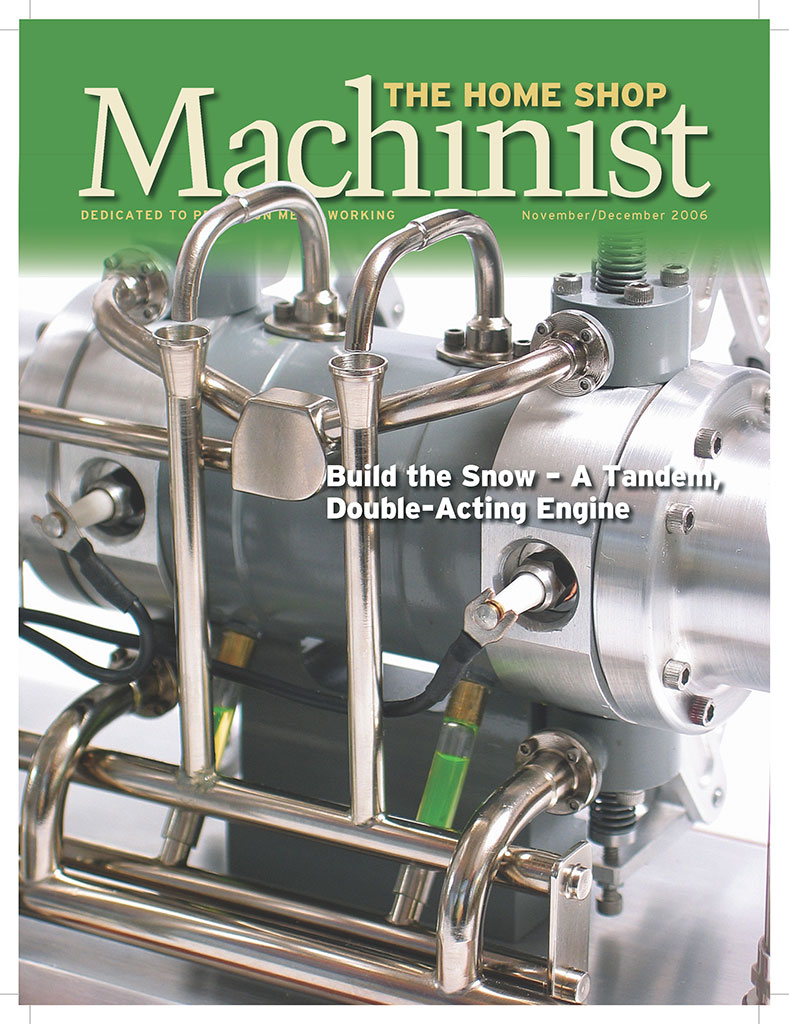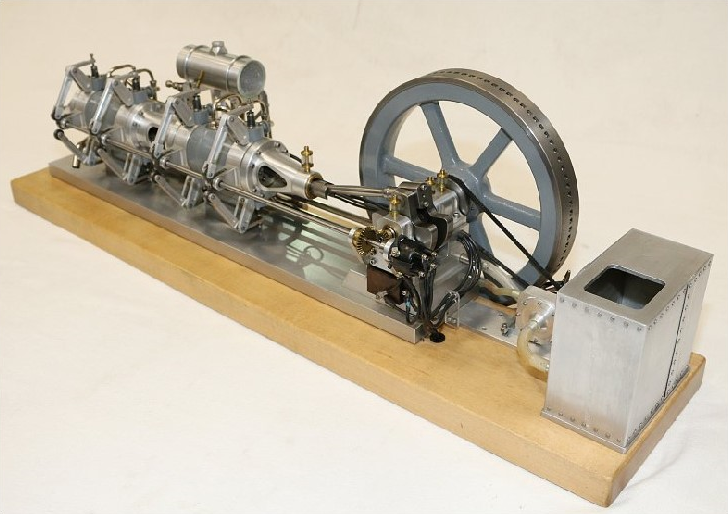The original full-size Snow engines were built in the early 1900s by the F.S. Snow Engine Company in Buffalo, NY. There are three operating Snow engines left in existence located in Florida, Pennsylvania, and Minnesota. They were often used to run compressors that liquified natural gas, and they could also be run on natural gas.
A tandem, double-acting engine is in effect a 4-cylinder internal combustion engine with a power stroke every 180° of crankshaft rotation. Two separate cylinders in-line each have a piston with a combustion chamber at each end. A double-acting engine fires on both ends of the piston, which requires a seal on the piston rod at four places. Another unique feature is the use of only one cam lobe to activate the intake and exhaust control levers.
One of the original full-size Snow engines in Florida produces 400 hp at 120 rpm with a 20” bore and 36” stroke. The flywheel is 12-feet in diameter and weighs 12 tons. This scale model Snow engine has a bore of 1.06” and a stroke of 1.88”. The flywheel is 8.5” in diameter, which makes it approximately .06 scale. Plans for the Snow engine, based on this original prototype, were drawn by Doug Kelley and published in The Home Shop Machinist magazine.








